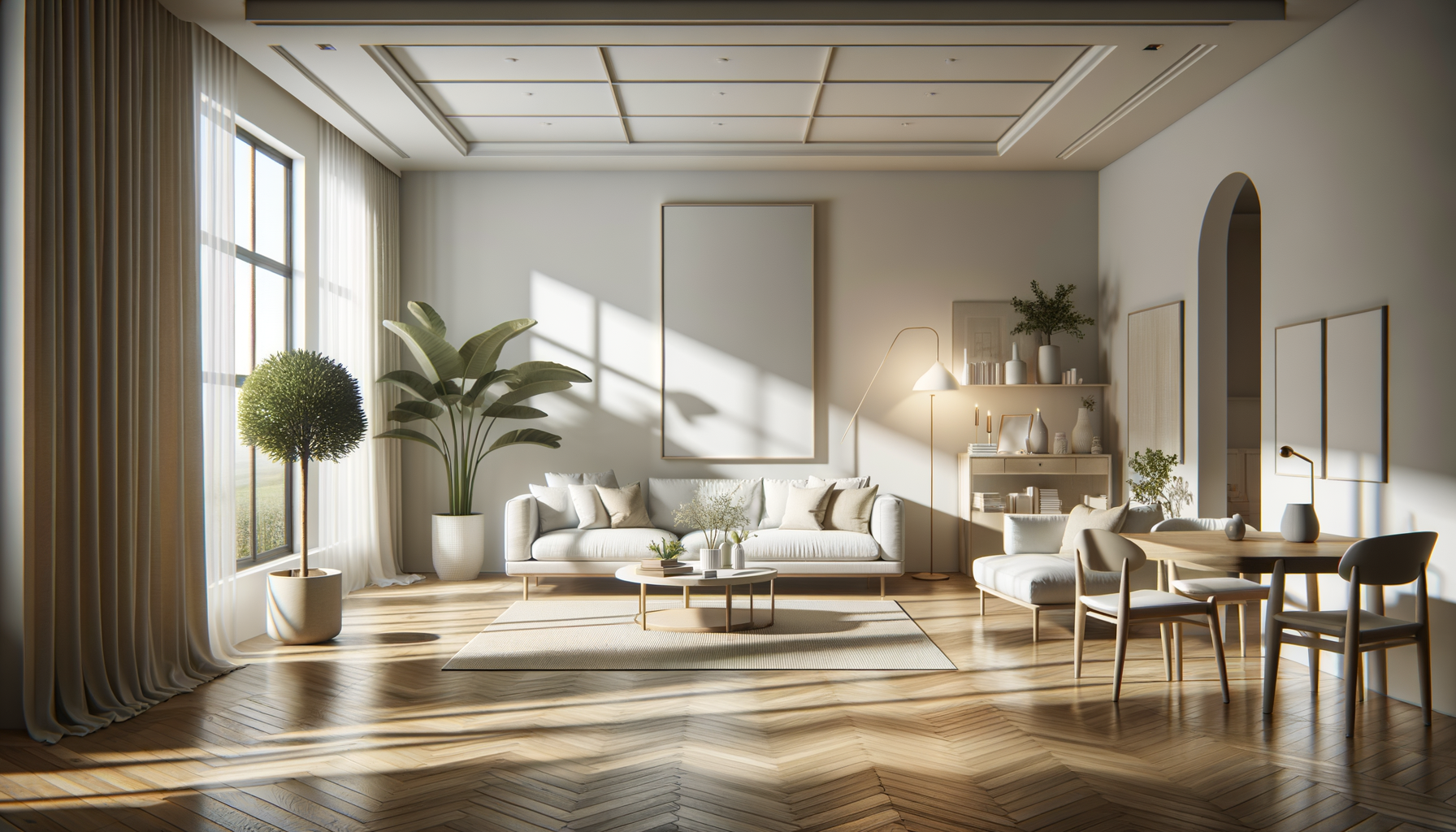“Embracing Simplicity: The Essentials of Minimalist Home Decor”

The minimalist approach to home decoration is revolutionizing the way people perceive their living spaces. This design style is grounded in simplicity, focusing on function, form, and a less-is-more methodology. Numerous people are adopting this minimalist aesthetic for their homes, craving clean lines, understated elegance, and simplicity in their living spaces.
Minimalism allows your life to take precedence, providing a serene, clutter-free environment that promotes tranquility and calmness. The emphasis on simplicity does not equate to a lack of design, but rather an intentional approach towards an organized and comfortable space.
Let’s delve more into this engaging design-style and explore a few minimalist decor tips you can implement to transform your own space:
**Streamline your furnishings**
The core factor that differentiates a minimalist home from others is the quantity of objects in the space. Minimalism encourages less clutter, which means less furniture. Start by eliminating unnecessary pieces, reducing the number of furnishings in each room to the essential items only. Go with simple, functional pieces that offer utility and aesthetic value but don’t go overboard.
**Neutral colour palette**
Minimalist decor embraces soothing tones and a restrained use of color. Stick to a clean, neutral palette of whites, beiges, or grays, with the occasional pop of color to accentuate the design. The goal is to limit visual distractions, allowing the room’s functional aspects to stand out.
**Quality over quantity**
Embrace the idea of having fewer items but focus on the quality and design of each piece. Select items that are durable, timeless, and versatile. This doesn’t mean you have to splurge on every item; instead, it encourages investing in furniture and decor that will withstand the test of time.
**Enjoy open spaces**
Minimalist design values space as much as it does items. Expansive open spaces create a breezy atmosphere, encouraging a sense of calmness and peace. Keep the floors clear and avoid overcrowding the walls. Open space influences how we perceive rooms, offering a sense of tranquility and openness.
**Let the light in**
Minimalist designs are all about natural elements. Use large windows, glass doors, and skylights to amplify the natural light in your home. If architectural changes aren’t viable, mirrors can help bounce light around and illuminate dark corners.
**Minimal Decorations**
Instead of multiple clusters of small decor items, go for one large, captivating piece. This could be a large-scale artwork, a unique rug, or an eye-catching plant. The idea is to have one primary point of attraction that doesn’t need to compete for attention.
**Add some green**
Indoor plants are a fantastic addition to any minimalist home. They add a touch of color without overwhelming the space. Furthermore, they play into the minimalist ideal of embracing nature and can positively impact one’s mood and indoor air quality.
**Function first**
Finally, always prioritize functionality over aesthetics. While minimalist decor is pleasing to the eye, it holds fast to the belief that form follows function. Each item in your space should offer some sort of functional value.
Adopting a minimalist approach to home decoration may take some time, especially for those accustomed to clutter or extravagant decorations. However, with Baby Steps, many find it liberating and conducive to a calm, focused life.
Remember, the core idea behind minimalism isn’t about having as few things as possible but about gains made by reducing unneeded items. Ultimately, it’s about creating a space of simplicity and mindfulness.
In conclusion, adopting a minimalist style for your home requires thoughtful selection, intentional placement of items, and a keen eye for simplicity. This approach promotes peace and tranquility while allowing you to appreciate the finer details of your home without being overwhelmed by clutter. Simplicity, neatness, and clarity become the focal points, allowing you to live a more focused, fulfilling life. Less can truly be more when every item serves a purpose and contributes to the overall aesthetic of your home.
